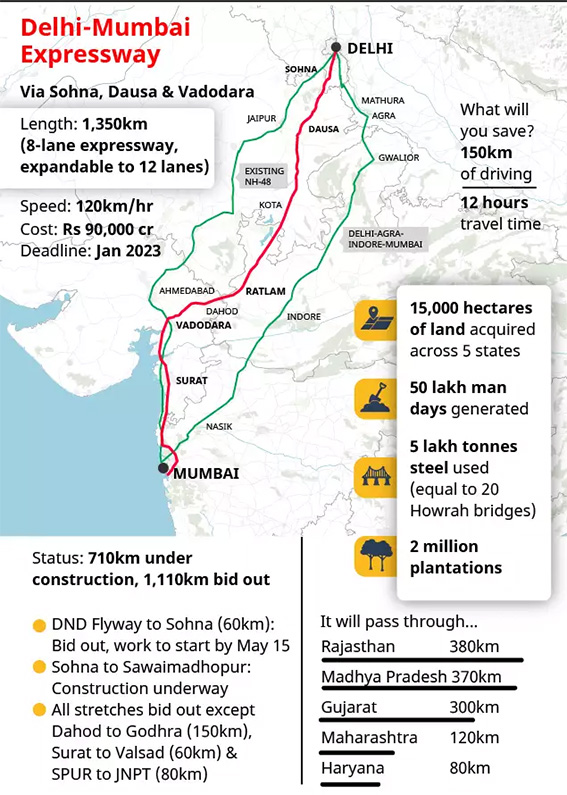Archives
Categories
The Delhi–Mumbai Expressway: A Game-Changer in India's Infrastructure Landscape
The Delhi–Mumbai Expressway, a monumental infrastructure project, is poised to redefine connectivity between India’s political and financial capitals, New Delhi and Mumbai, respectively. Spanning an impressive 1,350 kilometers, this eight-lane expressway, expandable to 12 lanes, promises to revolutionize travel experiences and bolster economic growth along its route.
Construction of this ambitious project commenced with the laying of the foundation stone by Union Minister Nitin Gadkari in March 2019, setting the stage for one of India’s most significant infrastructure endeavors. The total project cost, including land acquisition, is estimated to be around ₹1,00,000 crores (~US$13.1 billion), underscoring its strategic importance.
The Delhi–Mumbai Expressway traverses through six states and a union territory, namely Delhi, Haryana, Rajasthan, Madhya Pradesh, Gujarat, Maharashtra, and the Union Territory of Delhi. This extensive route connects major cities and industrial hubs, such as Sohna, Dausa, Kota, Ratlam, Vadodara, and Surat, before culminating at the Jawaharlal Nehru Port in Mumbai.
A notable feature of the expressway is its initial eight-lane width, with provisions for future expansion, aimed at reducing travel time from the current 24 hours to a mere 12 hours. This significant reduction in travel time will not only benefit commuters but also enhance connectivity and trade efficiency between key regions.

